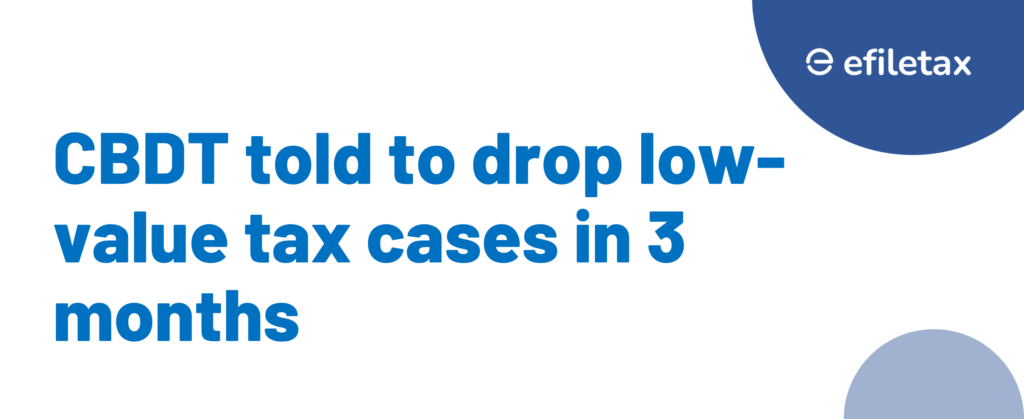
CBDT to Withdraw Low-Value Tax Cases: What’s Happening?
Finance Minister Nirmala Sitharaman has instructed the Central Board of Direct Taxes (CBDT) to withdraw all low-value tax cases pending before appellate authorities within the next three months. This move is aimed at reducing litigation backlog, improving taxpayer trust, and aligning departmental focus on high-impact cases.
The focus keyphrase low-value tax cases appears in the title, meta, intro, and below.
Why Is This Withdrawal Important?
As per reports from the FM-CBDT review meeting in July 2025:
- Thousands of low-value tax cases are clogging up the system.
- Many of these appeals involve disputed tax amounts below ₹25 lakh in High Courts and below ₹50 lakh in the Supreme Court, as per CBDT Circular No. 17/2019.
- These cases often lead to high litigation cost with negligible revenue impact.
- Taxpayers face compliance burdens and legal uncertainty due to prolonged pendency.
What Qualifies as a Low-Value Tax Case?
According to the existing CBDT Litigation Policy, the monetary thresholds are:
| Authority | Threshold for Appeal |
|---|---|
| ITAT (Tribunal) | ₹50 lakh |
| High Court | ₹1 crore |
| Supreme Court | ₹2 crore |
Note: These were revised via CBDT Circular No. 3/2018 and 17/2019.
However, the FM’s latest direction may target even smaller amounts, especially cases pending before CIT(A) and ITAT below the older ₹25 lakh/₹50 lakh limits.
Legal and Practical Implications
- Faster Disposal: Appellate forums can focus on high-value or precedent-setting matters.
- Taxpayer Relief: Small businesses and individuals can finally get closure.
- Cost Saving: Reduces administrative burden and legal costs for the Income Tax Department.
- Trust Boost: Helps rebuild trust between tax authorities and honest taxpayers.
Expert View: What Taxpayers Should Do
Track your appeal: If you’re involved in a low-value tax case, check its status on the IT e-filing portal or with your consultant.
Don’t withdraw prematurely: Wait for official withdrawal communication from the department or CIT(A)/ITAT order.
Previous Precedents of Withdrawal
The CBDT has issued similar instructions earlier under:
- CBDT Circular No. 17/2019 dated 8 Aug 2019
- CBDT Circular No. 21/2015 – which originally introduced thresholds
Will It Apply to GST or Other Cases?
No. The current directive is for Income-tax matters only, including:
- Assessment disputes
- Penalty orders
- TDS/TCS defaults
It does not cover GST or custom appeals under CBIC jurisdiction.
Timeline for Action
| Action Step | Deadline |
|---|---|
| Identify eligible cases | Within 30 days |
| Send withdrawal instructions | By 31 August 2025 |
| Tribunal/court withdrawal | Within 3 months |
Internal Link
Read our related blog: ITAT Restores 80G Application: Case Law Insight
External Source
For reference, see: CBDT Circular No. 17/2019
Summary
CBDT will withdraw all low-value tax cases within 3 months, as directed by FM Sitharaman. This aims to reduce litigation, save costs, and ease compliance burden for small taxpayers. Only Income-tax cases are covered—not GST.
FAQ Section
Q1. Will taxpayers be informed if their case is withdrawn?
Yes. Either a formal communication or an order copy will be provided by the appellate authority.
Q2. What happens to already paid demand?
Withdrawal of appeal does not automatically mean refund. Refund eligibility depends on case facts.
Q3. Can taxpayers still pursue the case?
If the taxpayer is the appellant and not the department, they may continue unless they also choose to withdraw.